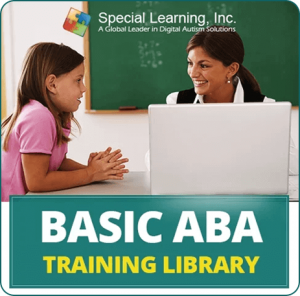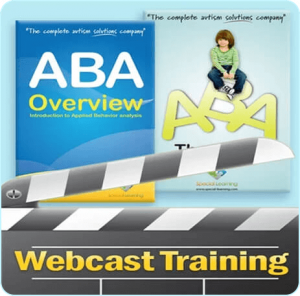Guiding Light: A Mother's Journey Understanding Applied Behavior Analysis for Autism
In a world with a population of 7 billion, it’s estimated that 75 million individuals, including those with autism and other special needs, share their unique journeys. Regrettably, my daughter is one of them.
Last year marked a pivotal moment in our family’s journey when my daughter’s Developmental Pediatrician confirmed her placement on the autism spectrum. Although we had observed certain signs, the official confirmation brought a distinct perspective. This revelation signaled the commencement of a new chapter in our lives.
Like so many parents setting out on this path, we immersed ourselves in thorough research on autism and sought counsel from experts. While we received a schedule for occupational therapy sessions, it hasn’t precisely matched our requirements. Progress has been gradual, and I frequently contemplate what the future holds for my daughter.
At this point, our understanding of autism remains somewhat limited. As a mother, my deepest aspiration is to provide unwavering support for my daughter throughout this remarkable journey.
That’s when I stumbled upon Applied Behavior Analysis (ABA) and its potential to offer invaluable insights and guidance for my daughter, ultimately assisting my family in comprehending and supporting her better. It was then that I found myself asking, ‘What exactly is ABA?’ The initial step on this journey was enrolling in the 40-hour RBT (Registered Behavior Technician) training program.
Understanding Applied Behavior Analysis (ABA)
Applied Behavior Analysis, often referred to as ABA, is the science of human behavior. It is a systematic and data-driven approach that utilizes direct observation and objective measurement to understand and modify behaviors. ABA harnesses methods and insights derived from behavioral science to enhance cognitive and behavioral function, fostering independence in everyday tasks through objective and data-driven treatment approaches.
ABA achieved substantial recognition and popularity during the 1960s, primarily owing to its remarkable effectiveness in working with individuals who have autism and developmental disabilities. It played a pivotal role in early intervention for children with autism, showcasing the potential for substantial behavioral improvements through well-structured interventions.
Over time, the principles of ABA have extended far beyond the realm of autism and developmental disabilities. They have found application in diverse fields, including education, organizational behavior management, sports coaching, addiction treatment, parenting, and many others. ABA techniques are highly esteemed for their evidence-based approach to effecting behavior change.
ABA is practiced by a range of professionals who hold specific credentials in the field. These credentials include the Board Certified Behavior Analyst – Doctoral (BCBA-D), the Behavior Analyst Certification Board (BCBA), the Board Certified Assistant Behavior Analyst (BCaBA), and the Registered Behavior Technician (RBT).
Indeed, within the realm of ABA, each credential comes with distinct roles and responsibilities. Registered Behavior Technicians (RBTs) assist their Supervisors in implementing programming but typically do not practice independently. Behavior Analyst Certification Board (BCBAs) are responsible for assessing program development, supervising program implementation, and program development. Board Certified Assistant Behavior Analysts (BCaBAs) assess, contribute to program development, and oversee caseload and implementation. Board Certified Behavior Analysts – Doctoral (BCBA-Ds) often focus on research within the field.
Absolutely, the ABC Model is a fundamental framework in applied behavior analysis (ABA) for understanding and analyzing behavior. Here’s a breakdown of its components:
- Antecedent: This is what occurs just before a particular behavior. It includes environmental cues, triggers, or events that precede the behavior in question. Understanding antecedents helps identify potential factors that contribute to the behavior.
- Behavior: Behavior encompasses any observable and measurable action, response, or reaction by an individual. A key principle of the ABC Model is to focus on behaviors that can be objectively described and quantified.
- Consequence: Consequence refers to what happens immediately after the behavior occurs. It includes the outcomes or reactions that follow the behavior. Analyzing consequences helps determine whether they reinforce or discourage the behavior.
This model is essential in ABA for identifying patterns, understanding the function of behavior, and developing effective interventions or strategies to modify behavior in a desired way. It’s a practical and systematic approach to behavior analysis that forms the foundation of ABA interventions, making it a powerful tool for improving behavior and promoting positive outcomes.
As a mother who was initially unfamiliar with ABA, this information was overwhelming to process. However, I’m confident that embracing ABA will greatly benefit both my daughter and me on this journey, because ABA’s objective is to elevate desirable behaviors, foster independence, and diminish unwanted behaviors. Learning the ABC Model has transformed how I interact with my daughter. Through my understanding of the ABC Model, I’ve shifted my approach. Now, I offer positive statements and reinforcement, and rather than resorting to threats or ultimatums, I present her with choices when possible, granting her a sense of agency in her action.
I’ve come to understand the vital role that Registered Behavior Technicians (RBTs) and licensed professionals play in the process, particularly in the importance of data collection, they meticulously collect data on a variety of aspects, encompassing behaviors that require augmentation, behaviors that warrant reduction, and behaviors that should be maintained.








